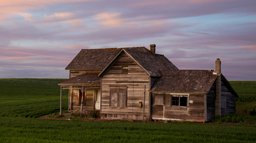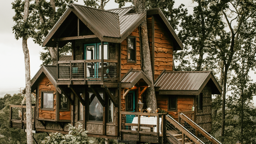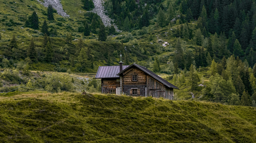
Retaining walls often are used to manage steep slopes in a landscape. They not only prevent erosion, but also create flat space for a garden bed, patio or a hedge.
Retaining walls are not limited to sloped yards, however. They can also be used to add the illusion of slope to a flat yard. After these decorative retaining walls are constructed, the area behind the wall is backfilled with soil for a planting area.
Interlocking block is the easiest material to work with when constructing retaining walls. The biggest advantage of interlocking block is that it doesn’t require mortar. Blocks are available in many styles and colors that will blend with or provide an accent to your landscape. Some of these products have a natural rock finish that resembles the texture of cut stone, which adds a distinctive touch to a wall.
Although the wall itself does not require any type of fixative, the coordinating capstones are held securely in place by construction-grade adhesive. We’ve used coordinating capstones for this project, but you could also use mortared natural stone, which creates a pleasing contrast.
Limit the height of retaining walls to 4 feet. Taller walls are subject to thousands of pounds of pressure from the weight of the soil and water. They require special building techniques and permits and are best constructed by professionals. If your slope is greater than 4 feet, build a series of terraced walls over the course of the slope, instead of a single, tall wall.
Ready to begin? First, here are a few materials you'll need for this project:
Tools and Materials
- Basic tools (carpenter’s level, tape measure, garden shovel, trenching spade, wheelbarrow, garden hoe, garden rake)
- Rented plate compactor
- Stakes
- String
- Line level
- Landscape fabric
- Compactible gravel
- Interlocking block
- Perforated drain tile
- Gravel
- Hand tamp
- Construction-grade adhesive
- Capstones
- Caulk gun
See Also: How to Store Your Tools for Winter
Step A: Excavate the Site

1. Excavate the slope to create a level area for the retaining wall. Allow at least 12 inches of space for the gravel backfill between the back of the wall and the hillside.
2. Use stakes to mark the front edge of the wall at the ends and at any corners or curves. Connect the stakes with string, and use a line level to check the string, adjusting until it’s level.
3. Dig a trench for the first row of block. Make the trench 8 inches deeper than the thickness of the block. Measure down from the string as you work to make sure the trench remains level.
4. Line the excavated area with strips of landscape fabric cut 3 feet longer than the planned height of the wall. Overlap the strips by at least 6 inches.
Step B: Build a Base and Lay the First Row

1. Spread a 6-inch layer of compactible gravel into the trench. Compact the gravel, using a plate compactor.
2. Lay the first row of blocks into the trench, aligning the front edges with the string. If you’re using flanged blocks, install the first row of blocks upside down and backward in the trench.
3. Check the blocks frequently with a level, and adjust them by adding or removing gravel.
Step C: Install Drain Tile and Add Rows

1. Lay the second row of blocks according to the manufacturer’s instructions, making sure the joints are staggered with the course below. As you work, check to make sure the blocks are level.
2. Add 1 to 2 inches of gravel, as needed, to create a slight downward pitch as the drain tile runs toward the outlet.
3. Place perforated drain tile on top of the gravel, about 6 inches behind the blocks, with the perforations facing down. Make sure the lowest end of the pipe is unobstructed so runoff water can escape.
4. Lay the additional rows until the wall is about 18 inches high, offsetting vertical joints in successive rows.
5. Fill behind the wall with coarse gravel, and pack it down with the hand tamp.
Step D: Lay the Remaining Rows and Backfill

1. Lay the remaining rows of block, except the cap row, backfilling with gravel and packing it down with a hand tamp as you work.
2. Fold the landscape fabric down over the gravel backfill. Add a thin layer of topsoil over the landscape fabric, then lightly pack down the soil, using the hand tamp.
3. Fold any excess landscape fabric back over the tamped soil.
Step E: Add the Capstones

1. Apply construction adhesive to the top blocks. Lay the capstones in place.
2. Use topsoil to fill in behind the wall and to fill in the trench at the base of the wall.
3. Add sod or other plants, as desired, above and below the wall.
See Also: How to Create an Outdoor Entertaining Space

Text and photos from “The Complete Guide to Creative Landscapes,” Creative Publishing International, $24.95, www.creativepub.com.










